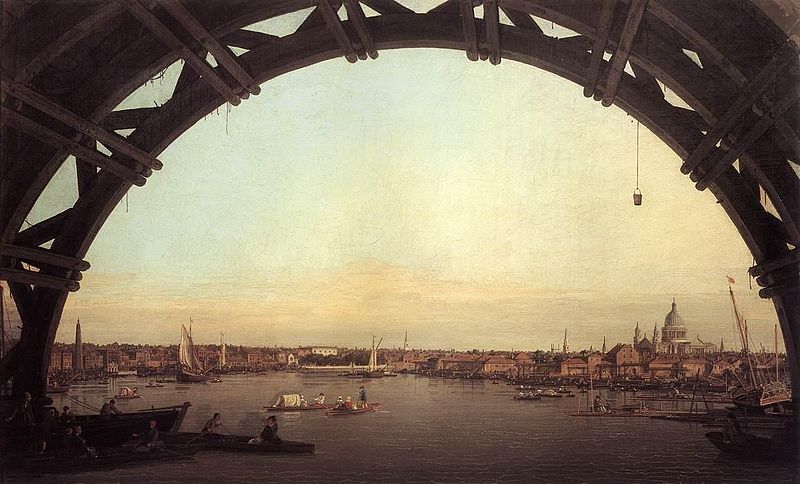Paul Caranicas’ minimalist landscapes—if that is what they are—rank among the most interesting paintings on the contemporary scene. They remind us that freshness is a quality of mind, one that has nothing to do with conventional idiosyncrasy. Caranicas views his own contemporary locales through a compositional device used by Canaletto during his stay in London.
Caranicas frames his paintings to the advantage of peripheral vision. He skirts the center of our field of view and explores—no, celebrates—the wealth of overlooked shapes that exist off the center of our gaze. The expressive forms of his motifs are adjacent to the center of the canvas but not in it. Neither are they necessarily on the spot where he puts them. Like a painter of capricci, Caranicas plays with architectural forms in combination with each other. Their location and the distances between them suit compositional needs, not Mapquest.
Ozone 18 (2009) presents the view from under The Egg, a monumental performing arts center in Albany’s Empire Plaza. Caranicas alludes to its unprecedented shape—as much a sculpture as a building—by moving one edge of James Rosati’s colossal yellow sculpture Lipincott into view. In real life, the statue sets at a different end of the plaza and is not visible from the chosen standpoint. Though its constituent parts are real, the motif tilts in the direction of an architectural fantasy. Using the devices of fantasists before him, Caranicas sets two anonymous figures at the edge of the plaza. No narrative attaches to them. They serve the traditional purposes of staffage, accessories to the scene, whose diminutive presence emphasizes the scale of their surroundings.

For all that the sky grips the center of these paintings, it is not his subject. Caranicas looks at the sky the way Canaletto viewed the River Thames from Richmond House or London through the arch of Westminster Bridge. The apparent simplicity of his motifs disguises true conceptual sophistication—visual wit—and a gift for putting art historical devices to contemporary purposes:
It helps to see Caranicas in art historical context. The juxtaposition is its own argument for the continuing vitality of older compositional devices. A fresh eye is more rare than eccentricity.

NOTE: A variation on this essay appeared first in CityArts, April 6, 2010.
© 2010 Maureen Mullarkey


